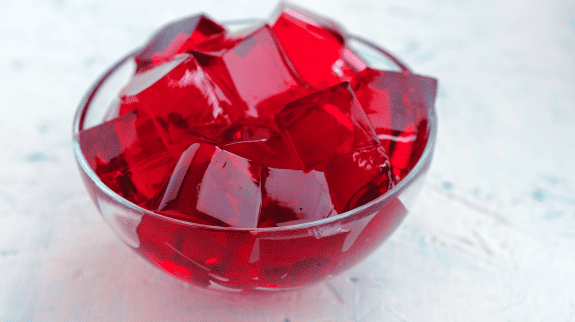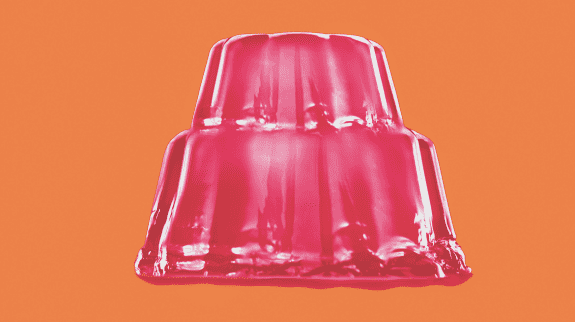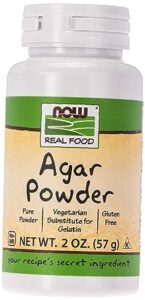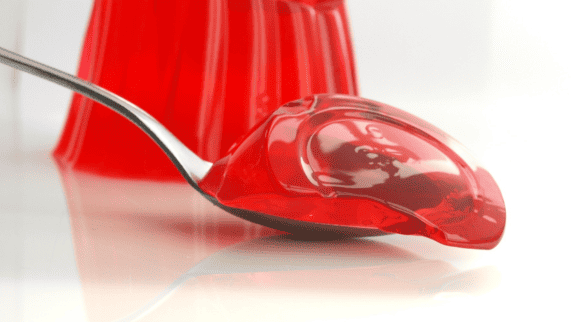Homemade protein jelly is a great way to ensure that you are getting high-quality protein without any added preservatives, artificial flavors, or sweeteners. It is also a great option for people who are lactose intolerant or have other dietary restrictions. Making your own protein jelly is easy and affordable, and it allows you to customize the flavor and texture to your liking.
Whether you are a fitness enthusiast or simply looking for a healthy snack, homemade protein jelly is a great option to consider.
KEY TAKEAWAYS
- Protein jelly is a delicious and nutritious way to increase your protein intake.
- Homemade protein jelly is a great option for people with dietary restrictions and allows you to customize the flavor and texture.
- Making your own protein jelly is easy, affordable, and provides high-quality protein without any added preservatives or artificial flavors.
Protein Jelly Recipe

This is a very quick, versatile, low-calorie, high-protein recipe that you can enjoy at any time of the day.
You have the option to use sugar-free gelatine powder for a low-calorie snack, or the full-sugar version, which can be a good option if you require a hit of fast-digesting carbohydrates and protein before a workout!
Utensils required: a food processor, fridge, and silicone molds.
INGREDIENTS
570ml boiling hot water
23g flavored gelatine (a flavor of your choice)
60g whey protein powder (ideally the same flavor as the jelly)
570ml plant milk of your choice
METHOD
1. Boil water in the kettle
2. Pour the water into a blender along with the gelatine, milk, and protein powder of your choice
3. Blend all ingredients until smooth
4. Pour the mixture into the jelly molds
5. Allow to cool overnight in the fridge
6. Remove from the molds when you want to eat them and enjoy!
Choosing the Right Ingredients

When making homemade protein jelly, choosing the right ingredients is crucial to achieving the desired texture and taste. Here are some key factors to consider when selecting your ingredients:
Protein Powder
Protein powder is a key ingredient in protein jelly, as it provides the necessary protein to support muscle growth and repair. There are many different types of protein powder available, including whey, plant-based (such as pea or hemp), and collagen peptides. When selecting a protein powder, consider your dietary preferences and any allergies or intolerances you may have.
Gelatin or Agar Agar
Gelatin or agar agar is what gives protein jelly its signature texture. Gelatin is derived from animal collagen and is not suitable for vegetarians or vegans. Agar agar, on the other hand, is a plant-based alternative that is suitable for those following a vegan diet. Both gelatin and agar agar can be used to make protein jelly, but the ratios and preparation methods may differ.

Sweeteners
Protein jelly can be sweetened with a variety of ingredients, including honey, maple syrup, and artificial sweeteners. When selecting a sweetener, consider the macros and calories of each option, as well as any potential allergens or intolerances.
Fruit Juice or Puree
Fruit juice or puree can be used to add flavor and color to protein jelly. Popular options include strawberry or pineapple juice. When selecting a fruit juice or puree, consider the sugar content and any potential allergens.
Greek Yogurt or Dairy-Free Milk
Greek yogurt or dairy-free milk can be used to add creaminess and protein to protein jelly. When selecting a dairy-free milk, consider any potential allergens or intolerances. Popular options include almond milk or soy milk.
It’s important to always read ingredient labels carefully, especially if you have allergies or intolerances. By selecting the right ingredients, you can create a delicious and nutritious homemade high protein or jelly that meets your dietary needs and preferences.
Also read: The best carnivore diet snacks
Nutritional Breakdown

When it comes to snacking, homemade protein jelly is a nutritious and healthy option that is high in protein and low in calories. Let’s take a closer look at its nutritional breakdown.
Calories and Macronutrients
A 1-cup serving of homemade protein jelly contains approximately 50-60 calories, for around 10-15 grams of protein per serving,depending on the recipe and ingredients used. It is low in fat, with only 0-1 grams per serving, and contains no cholesterol. The jelly is also low in carbohydrates, with only 1-2 grams per serving, making it a great option for those following a low-carb diet.
Fiber and Sugar
Homemade protein jelly is also a good source of fiber, with most recipes containing around 1-2 grams per serving. Fiber is important for maintaining digestive health and can also help with weight loss by keeping you feeling full for longer.
When it comes to sugar, homemade protein jelly is a great alternative to traditional jelly, which is usually high in sugar. Most homemade protein jelly recipes use natural sweeteners such as stevia or honey, or no sweetener at all, making it a healthier option for those watching their sugar intake.
Collagen and Sodium
Another benefit of homemade protein jelly is its collagen content. Collagen is a protein that is important for maintaining healthy skin, hair, and nails, as well as supporting joint health. Many homemade protein jelly recipes include collagen powder as an ingredient.
It’s important to note that homemade protein jelly can also be high in sodium, depending on the recipe and ingredients used. It’s always a good idea to check the nutrition facts and adjust the recipe accordingly if you are watching your sodium intake.
Frequently Asked Questions
How do you make clear whey jelly?
To make clear whey jelly, you will need to use whey protein isolate instead of a protein powder that contains other ingredients. Combine the whey protein isolate, cold water only, and gelatin in a saucepan and heat until the gelatin dissolves. Pour the mixture into a mold and let it set in the refrigerator for several hours.
What are the benefits of adding protein to jelly?
Adding protein to jelly can increase its nutritional value and make it a more satisfying snack. Protein can help you feel fuller for longer, which may help you eat less overall. Additionally, protein is essential for muscle repair and growth, making it an important nutrient for athletes and active individuals.
Can you make sugar-free protein jelly?
Yes, you can make sugar-free protein jelly by using a sugar substitute such as stevia or erythritol. Be sure to read the instructions on your sugar substitute carefully, as some substitutes may require different measurements than regular sugar.
Can You Add Protein Powder to Jello Mix?
Yes, you can add protein powder to Jello mix. Simply dissolve the Jello mix in boiling water, add the protein powder, and stir until it is well combined. Then pour the mixture into jelly molds and keep in the fridge overnight, until ready to eat.
Is protein jelly a good post-workout snack?
Protein jelly can be a good post-workout snack for individuals who are looking to increase their protein intake. However, it is important to remember that protein should not be the only nutrient you consume after a workout. It is also important to replenish your body with carbohydrates and electrolytes.
How can I incorporate homemade protein jelly into my diet?
Homemade protein jelly can be incorporated into your diet in many ways. You can eat it as a snack, add it to smoothies or yogurt bowls, or use it as a topping for pancakes or waffles. Experiment with different flavors and recipes to find the best way to incorporate protein jelly into your diet.

